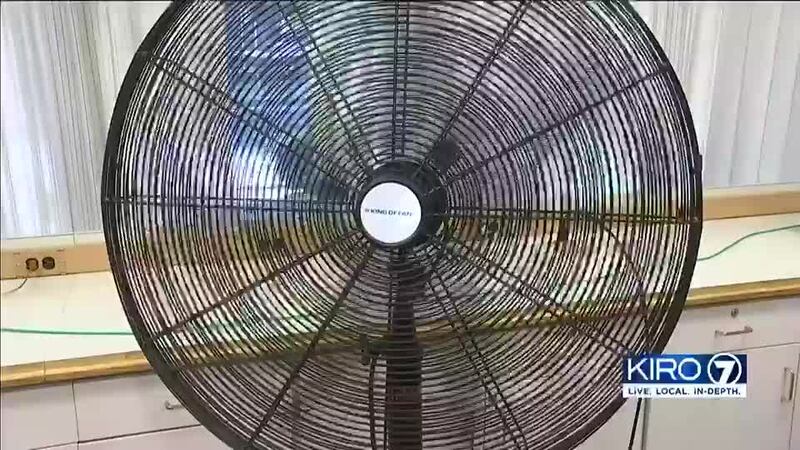Energy companies are keeping a close eye on the state’s power grid as the Pacific Northwest braces for extreme heat.
With an excessive heat warning already in effect, and triple-digit temperatures expected to break records in Seattle and the surrounding areas, power companies are monitoring the power grid.
The question is, can our power grid handle it?
“Well, I can tell you the system is currently performing well,” said Andrew Padula, a spokesperson with Puget Sound Energy (PSE).
PSE supplies power to roughly 1.1 million households. Padula said they have already seen some strain on their systems, as more people add air conditioning units to their homes.
“Energy usage is being monitored around the clock. We plan to meet all the demand with our own generation assets,” Padula continued.
While extreme heat is rare for the Pacific Northwest, severe weather is something PSE plans for.
“We prepare for extreme temperatures all year round by investing in infrastructure projects to keep the system redundant and reliable,” he explained. “Some of that work includes replacing underground cables because the heat will cause them to fail.”
According to PSE, the company has an additional 200 megawatts in reserve; that’s 100 more than usual.
The reserve is created when allotted power isn’t used. It can then be tapped into on an as-needed basis.
Seattle City Light (SCL), another major provider in King County, services just over 900,000 homes. Michelle Vargo, SCL’s Chief Operating Officer, said the Northwest as a region has adequate resources to meet the expected loads that they expect to see in the coming days.
“With this heat wave, we are coordinating regionally. The electric system is obviously a system that operates together, so we are working with the utilities that surround us,” Vargo said at a Thursday news conference with Seattle City Mayor Jenny Durkan.
“We do believe, at this point in time, that we should be able to get through this event with the resources that we do have,” Vargo continued.
Vargo said Seattle typically uses the most power during the winter months.
“We have not seen a summer peak that is more than 75% of the peak that we see in the winter,” she explained. “Typically, this time of year, the system sees 50% compared to winter peak demand on the system … so, again, we do think we have the resources necessary to get to the event.”
Both companies are reportedly monitoring their systems round-the-clock. Still, there are some unknowns.
“Is there any concern for overheating of systems?,” KIRO-7 reporter Elle Thomas asked Padula.
“That’s a good question,” Padula responded. “You know, I assume that maybe there could potentially be, but I don’t think that we’re necessarily concerned with that right now.”
Both PSE and SCL ask the public to keep energy conservation in mind to prevent unnecessary stress on the system.
That includes simple tasks like keeping your blinds or curtains closed, turning off any fans when you are not home (as they do not cool a space, only circulate air), use energy-efficient light bulbs, and reserve use of big household appliances for the evening hours.
For those with air conditioning, PSE recommends setting the thermostat “as high as they possibly can handle,” or a maximum of 75 degrees.
“That will not only help to reduce strain on the system, but also help them save on their energy bill up to about 5% in the long run,” Padula said.
As the companies continue to monitor their system, both plan to have crews at the ready, should an outage occur.
You can find a list of resources to help you beat the heat HERE.
©2021 Cox Media Group







